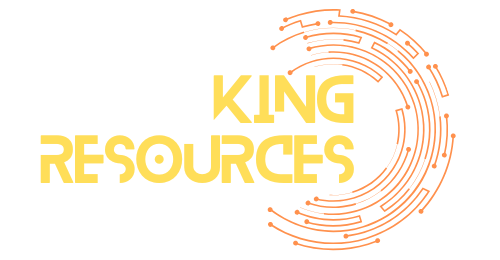Sinus infections, or sinusitis, can bring discomfort and disrupt daily life. Many people experience symptoms like nasal congestion, facial pain, and headaches, but knowing whether it’s a sinus infection can be tricky. Understanding how to test for a sinus infection is crucial for effective treatment and recovery.
Self-assessment is often the first step, but professional evaluation may be necessary for a definitive diagnosis. By recognizing the signs and symptoms and exploring available testing options, individuals can take charge of their health. This guide will walk through the essential steps to determine if a sinus infection is the culprit behind those nagging symptoms.
Table of Contents
ToggleUnderstanding Sinus Infections
Sinus infections, or sinusitis, occur when the sinus cavities become inflamed or swollen. This inflammation often stems from infections, allergies, or irritants. Three primary types of sinus infections exist: acute, subacute, and chronic.
Acute Sinusitis
Acute sinusitis lasts up to four weeks and often follows a cold. Symptoms include thick nasal mucus, facial pain, fever, and fatigue. Bacterial infections frequently cause this type of sinusitis, necessitating appropriate medical attention.
Subacute Sinusitis
Subacute sinusitis extends from four to twelve weeks. Symptoms resemble those of acute sinusitis but tend to be less severe. Treatment usually involves watchful waiting and symptom management, often resulting in spontaneous improvement.
Chronic Sinusitis
Chronic sinusitis persists for more than twelve weeks and presents ongoing symptoms that can significantly affect quality of life. Symptoms often include nasal obstruction, a constant postnasal drip, and a reduced sense of smell. Chronic sinusitis may require a comprehensive treatment plan, including medications and possible surgical intervention.
Symptoms
Common symptoms of sinus infections include:
- Nasal congestion
- Thick nasal discharge
- Facial pain or pressure
- Headache
- Fever
- Cough or postnasal drip
- Halitosis (bad breath)
Recognizing these symptoms plays a crucial role in distinguishing sinus infections from other respiratory conditions. While self-assessment is beneficial, professional evaluation often provides a definitive diagnosis and appropriate treatment options.
Signs and Symptoms of Sinus Infection

Recognizing the signs and symptoms of a sinus infection is essential for prompt diagnosis and potential treatment. Symptoms can vary in intensity and duration, ranging from mild to severe.
Common Symptoms
- Nasal Congestion: Nasal passages become blocked, making breathing difficult.
- Facial Pain: Discomfort often occurs around the cheeks, forehead, or eyes.
- Thick Nasal Discharge: Often yellow or green in color, discharge may drain from the nose or down the throat.
- Headache: Pressure from swollen sinuses can lead to headaches, often worsening when bending forward.
- Cough: A persistent cough may result from post-nasal drip, which irritates the throat.
- Fever: Low-grade fevers are common but can indicate a more serious infection.
Severe Symptoms
- Persistent Fever: A fever higher than 101.5°F may signal a bacterial infection requiring medical evaluation.
- Severe Facial Pain: Intense pain that does not improve with over-the-counter pain relievers may indicate sinus complications.
- Swelling Around the Eyes: Swelling that affects vision or creates pressure in the eyes may signal a serious condition.
- Confusion or High Fever: These symptoms often require immediate medical attention as they can point to a severe infection or a different health issue.
- Shortness of Breath: Difficulty breathing may accompany severe sinus infections, necessitating urgent care.
- Symptoms Lasting Over Ten Days: Persistent symptoms instead of improvement often indicate a need for professional evaluation and potential intervention.
Testing Methods for Sinus Infection
Testing methods for sinus infections typically involve a combination of physical examinations, laboratory tests, and imaging studies to confirm the diagnosis and assess the extent of the infection.
Physical Examination
Healthcare providers commonly start with a thorough physical examination to evaluate symptoms. They check for nasal congestion, discharge, and tenderness around the sinuses. The provider may also use an otoscope to inspect the nasal passages for inflammation or obstruction. Assessing facial pain during palpation helps gauge the severity of sinus involvement. This step provides immediate insight into potential sinus infections.
Laboratory Tests
Laboratory tests can assist in diagnosing sinus infections, particularly when bacterial infection is suspected. A healthcare provider might recommend a nasal swab or culture to identify the presence of bacteria or fungi. Blood tests can also be performed to check for elevated white blood cell counts, indicating an immune response to infection. Allergies may also be evaluated through skin or blood tests if sinusitis symptoms are recurrent.
Imaging Studies
Imaging studies offer detailed visuals of the sinuses and surrounding areas. A CT scan remains the gold standard for visualizing sinus structures, identifying blockages, and assessing inflammation. X-rays may be utilized in some cases, but they provide less detail compared to CT scans. Imaging is particularly helpful in chronic sinusitis cases or when complications are suspected, guiding further treatment strategies effectively.
At-Home Testing Options
At-home testing for sinus infections can assist in identifying symptoms early. While these methods aren’t definitive, they provide valuable insights.
- Symptom Checker: Individuals can use online symptom checkers to assess their signs against common sinus infection symptoms. These resources often guide users based on reported symptoms like nasal congestion and facial pressure.
- Nasal Irrigation: Performing nasal irrigation with saline solutions helps determine if a sinus infection causes discomfort. If irrigation relieves congestion or improves nasal flow, this may indicate sinus issues.
- Nasal Swab Test: Collecting a nasal swab can help evaluate for signs of infection. Analyzing the swab at home may reveal the presence of bacteria or allergens.
- Pain Scale Assessment: Using a pain scale to evaluate facial pain levels can assist in tracking symptom severity. Regularly noting changes in pain intensity helps gauge infection progression.
- Temperature Monitoring: Keeping a daily record of body temperature can help identify fever patterns. A persistent low-grade fever might suggest sinus infection involvement.
- Symptom Journal: Maintaining a symptom journal provides a detailed log of challenges faced. Documenting occurrences of headaches, discharge color, and facial pressure assists in identifying patterns over time.
- Hydration and Rest: Monitoring the response to increased fluid intake and rest can help determine if symptoms improve. If hydration alleviates symptoms, this may suggest the body’s attempt to fight an infection.
- Allergy Management: Tracking allergy symptoms can clarify whether allergies contribute to sinus problems. Individuals may note if allergy medications mitigate nasal symptoms.
While these at-home options can provide initial insights, professional evaluation remains crucial for an accurate diagnosis and tailored treatment plan.
Professional Medical Testing
Professional medical testing for sinus infections involves comprehensive evaluations to confirm diagnosis and guide treatment. Healthcare providers utilize several methods to assess sinus health effectively.
- Physical Examination
Healthcare providers conduct a thorough physical examination. They evaluate symptoms by checking for nasal congestion, discharge, tenderness around the sinuses, and other visible signs of infection.
- Laboratory Tests
Laboratory tests assist in identifying infections or allergies. Nasal swabs can detect bacteria or fungi, while blood tests may reveal allergic reactions or ongoing infections.
- Imaging Studies
Imaging studies like CT scans offer detailed insights into sinus condition. CT scans allow healthcare providers to visualize sinus cavities and check for obstructions, inflammation, or complications related to chronic sinusitis.
- Allergy Testing
Allergy testing provides additional context for recurrent sinus infections. Identifying allergens helps target treatment and prevent future episodes of sinusitis.
- Referral to Specialists
Referral to an ear, nose, and throat (ENT) specialist may be necessary for chronic cases or complex presentations. ENTs can offer specialized procedures and advanced diagnostic tools to manage severe infections effectively.
Engaging in professional medical testing ensures a precise diagnosis of sinus infections, leading to tailored treatment plans that address individual health needs.
Testing for sinus infections is a vital step in managing symptoms and ensuring effective treatment. By recognizing the signs and seeking appropriate medical evaluation, individuals can navigate their health with confidence. While at-home methods offer initial insights, professional assessments remain essential for accurate diagnosis.
Healthcare providers utilize a variety of testing approaches to confirm sinusitis and rule out other conditions. This comprehensive process not only helps in identifying the type of sinus infection but also guides tailored treatment strategies. Prioritizing health and addressing symptoms promptly can lead to better outcomes and improved quality of life.









